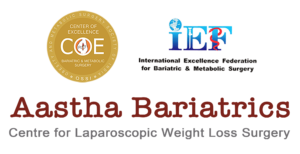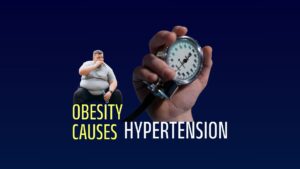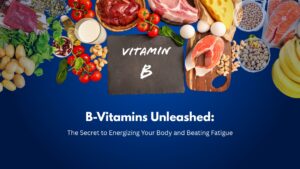How to Lose Body Fat and Preserve Muscle Mass

If you have been working hard to get in shape and yet want to lose more fat then you may have concern that you shall lose muscle as well. To prevent this, you can follow a few eating and fitness guidelines that will help you achieve the results you want.
You must go about losing weight safely and effectively to optimize fat loss and muscle maintenance. This is especially important if you want to maintain your fitness level, physical activity, and overall function. With the right approach, it’s possible to lose fat while maintaining muscle mass.
What to do to lose fat?
To lose fat, you need to consume fewer calories than you burn each day and exercise regularly. Frequent physical activity helps get rid of fat. If you lose weight without exercise then you are more likely to lose both fat and muscle.
While it’s not possible to lose fat on particular areas of your body, you can work on lowering your overall body fat percentage.
Go slowly. Losing weight quickly may contribute to muscle loss. It’s best to lose a small amount of weight each week over a longer period.
How to maintain muscle?
To keep the muscle you have while losing fat, you shall have to strike a balance between limiting yourself and pushing yourself as much as you can.
Listening to your body, and adjust your workout and eating plans accordingly.
Schedule recovery time:
Give yourself enough time to recover between workouts. This is especially important if you are taking fewer calories and doing intense workout. Get a good amount of sleep which can restore your energy.
Cardio exercises:
To lose fat and maintain muscle mass, do moderate to Exercise:
Exercise is a really important aspect of muscle gaining and maintaining it for a long period of time. When you follow an eating plan and do some type of exercise then you can prevent yourself from losing muscle due to calorie restrictions. More research is going on to determine which type of exercise is best for preventing muscle loss.
Eat healthy:
Change up your eating plans to include the right amount of macronutrients such as carbohydrates, proteins and fats in your diet. Apart from macronutrients your body should also consume some good amount of micronutrients such as Vitamin D, Vitamin C, Iron, Magnesium, Zinc etc for growth and development.
If you are not gaining or if there is no build up of muscles from the diet then you can go for supplements such as chromium picolinate which is said to have a positive effect on weight loss, hunger and blood sugar levels.
But before taking any supplement, it’s a good idea to check in with your doctor. Some supplements may negatively interact with certain medications or conditions.
high intensity cardio for at least 25 to 30mins cardio per day. Examples of cardio exercises include:
- Cycling, boxing, running, soccer, basketball and volleyball.
- Dancing to music, jogging in place, single leg stand, jumping jacks
- Squat jumps, jump rope, stair climbs
- Mountain climbers, bear crawl
Pre and Post workout meal:
To optimize fat loss while maintaining muscle mass, follow a healthy diet that meets your nutritional and energetic needs. Eating healthy foods may also help you feel full so you shall be less likely to overeat.
Before your workout, make sure you’re well hydrated by drinking plenty of fluids. Replace sugary beverages with drinks such as green tea, coconut water, and fresh vegetable juice. You can also have a light, easy-to-digest meal that’s rich in carbohydrates.
Within 45 minutes of finishing a workout, eat a meal containing protein, carbohydrates and healthy fats. Boost your energy levels with carbohydrates after a workout. Carbohydrates help replace glycogen stores that were used for energy during exercise.
Carbohydrates that are ideal to eat after exercise include:
- Fresh fruits
- Sweet potatoes
- Dark, leafy vegetables
- Milk, oatmeal, legumes, grains
Protein options for gaining lean muscle include:
- Lean meat such as turkey and chicken
- Low fat dairy products
- Nuts, beans, brown rice
- Eggs, protein shakes
You can also include healthy fats in your post workout meals such as:
- Avocado
- Nuts, nut butters
- Chia seeds
- Dark chocolates, whole eggs, fatty fish and cheese.
Take a rest:
Allow for adequate rest and recovery on alternate days. Either take an entire day off, or opt for light-intensity exercise, such as walking, swimming, or dancing. Taking rest and giving your body and mind rest will help in gaining and preserving your muscles.
When to talk with a consultant?
A certified nutritionist or dietitian can help you align your eating and exercise plan with your overall goals. Working with a professional may be especially beneficial if your eating plan affects any existing health conditions, or if you have special dietary needs. It’s also useful for people who are unsure of exactly how to change their eating habits.
A personal trainer can help you create an exercise routine that’s in line with your goals and fitness level. They’ll also make sure you’re using the correct weights and using proper form. As you progress, a consultant or a trainer or a pro can continue to tailor your program in a way that helps you advance. They’ll also motivate you and provide accountability.
The bottom line:
While you may end up losing a small amount of muscle mass along with excess fat, you can help manage it with a proper eating and exercise plan.
To support fat loss, maintain a calorie deficit while eating lots of protein, carbs, and fresh fruits and vegetables.
Set attainable, realistic goals. Keep track of your progress over several months. Challenge yourself to improve your performance and focus on building strength.
Read also; The Cost of Bariatric Surgery in India
Why We Are?
- Asia's Trusted Bariatric Center
- Centre of Excellence
- Patient Trusted Highly Volume Bariatric Center in Mumbai
- EMI, Cashless & Mediclaim Facilities are Available
- Daily Patients Follow-up after Bariatric Surgery
- Patient Support Group Every Month
- Obesity Awareness Program
- Available with Latest Technologies
- 18+ Experience in Weight Loss Bariatric Surgery
- 300+ Weight Loss Diet Plan & Recipes
- Highly Trained & Experienced Bariatric Nutritionist
- Patient WhatsApp Chat Group
- & Many More
Medically reviewed by Dr. Manish Motwani, Bariatric & Metabolic Laparoscopic Bariatric Surgeon — Curated by Kaushal






